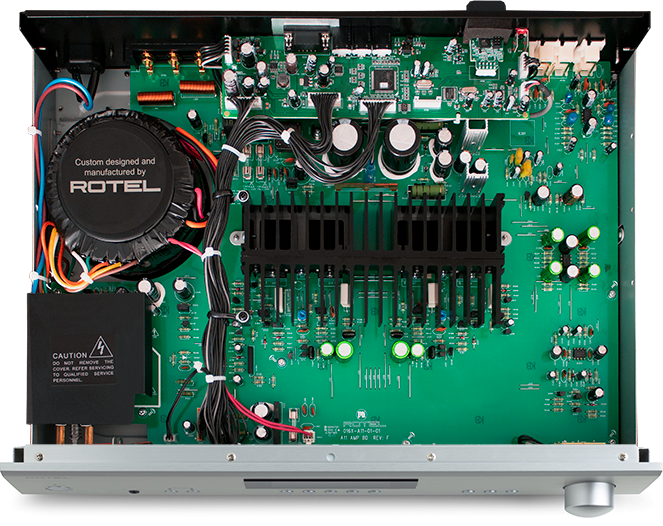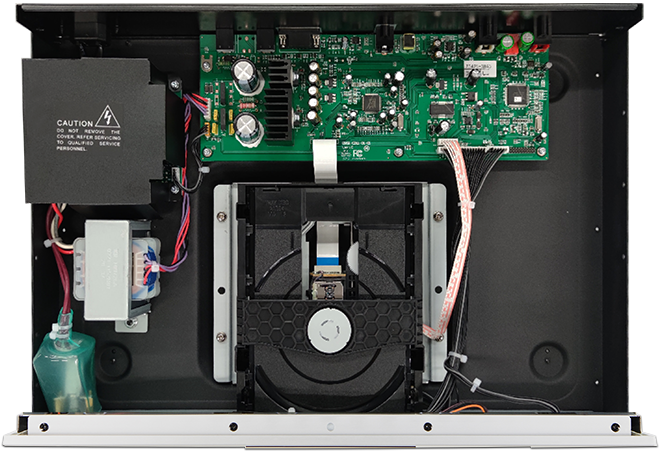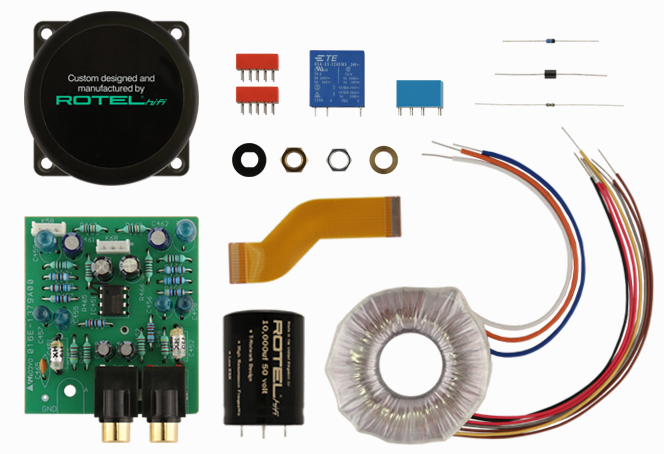Rotel A11 and CD 11 Tribute Review
So what is the Tribute Edition?
Well, as you may imagine, someone took a standard model, the A11 and CD 11 in this case, and sprinkled their magic dust over it, with some important component changes.
The main changes come in the form of capacitors which have been swopped to better performing ones. In the CD 11 eight capacitors in the D/A stage and nine in the power supply. In the A11, upgraded components have been added in the preamp, volume circuit plus capacitors in the output stage.
In addition, damping on the chassis have also been added to both.
Not bad, and all for the better, you might say, it's common for companies to release such 'enhanced' editions. But the interesting bit comes in who was behind it.
You many be surprised to know that Ken Ishiwata was the genius behind this effort. Many will know he is the wizard behind many of the wonderful audiophile components that have come out of the factories at Marantz. But somehow in 2019, the company parted ways with him and he then collaborated with his friend Karl-Heinz Fink of Fink Audio and designed this pair for Rotel.
Some interesting features to note
Accompanying equipment :
My normal setup:
https://peteswrite.blogspot.com/2020/02/my-setup-22020.html
For this review, I used some basic Chord (https://chord.co.uk/product/leyline-speaker-cable-ls0h/), Cable Talk Interconnects and the standard kettle cord power cables. All of these will cost under $150. I placed them on some old Atacama SE 24 stands filled with Atabites. I wanted to simulate what I would use as a student or perhaps a new entrant into audiophile gear.
I tried to keep it to the same level, so I initially did not use any exotic cables, but I also tried it later on with my Dynaudio C1 Platinum (later on in the review), and the Dynaudio Special 40s.
After some time of run in, I sat down to listen to them one quiet evening. And the result left me with a wonderful grin, and also a tear in my eyes...
The Rotel pair was truly something special, and if you hid them in a cabinet, and asked the listener to judge how much the price tag is, I doubt if anyone will guess how low it is.
There was PRAT, there was definition, and there was a wide, deep soundstage that will bring a smile to anyone who was listening. The tone was neutral or perhaps a hint warmer than absolutely neutral, and will be friendly towards speakers that tend towards the hotter end of the higher frequencies. You could pick out various performers easily, and follow the rhythm nicely. Despite being budget friendly products, it was not embarrassed driving speakers that cost a lot more. That really piqued my curiosity, as I decided to throw more and more expensive speakers at it.
I began my journey with a pair of Dynaudio Special 40s, and the sound was very nice. I went on to use my KEF LS 50s and the pair drove them nicely, and as many may know the treble on the original LS50s can be a bit prominent, so it is more demanding of it's partners. There was no issue here and there was good synergy. There was also a lovely bass with very good control.
As for the load, Dynaudio speakers and the KEF can be harder to drive than some other designs, but the Rotel handled them with great aplomb. You will need to go beyond the 50 mark to get them to sing, but there was no evidence of strain, and when I moved from a small room (16 sq m) into my larger listening area (40 sq m), the A11 was able to cope when you crank it up. (https://peteswrite.blogspot.com/2017/07/dynaudio-special-forty-speaker-review.html)
I then decided to throw my Dynaudio Platinum Confidence One into the fray as well, and this speaker retailed for more than fifteen times what the Rotel costs, yet it did not feel out of it's depth at all. I was having fun with it.

I then swopped out the CD 11 for something more modern with streaming options and a superior DAC. I connected my Marantz 30N SACD network SACD player, and used the same basic cables. I also swopped out the basic ones for some Wireworld cables and each time you could hear some improvements.
The tone was always mellow, sweet yet detailed. I don't think you can drive really large floorstanders in a large room to head banging levels, but when you listen at sane levels, this pair was happy to play along, totally at ease with speakers that cost a grand, or with those which cost a whole lot more.
Here was a pair which left me no doubt that Ken was behind it. I have owned more than 20 Marantz products and a few of his KI edition products, and somewhere in the middle of the audition, I could feel him sitting next to me sharing about the pair, as he did with the last pair that he showed me during the Munich show. I felt that I was on the same chair again, and somewhere in this pair, is a little bit of Ken.
I swopped out the A11, and used my existing Marantz PM 11 S3 (https://peteswrite.blogspot.com/2014/04/marantz-pm11s3-review.html), and whilst the tone remains similar, the far more expensive amp could find a little more detail, dig a little deeper and show more control with less noise. The differences become clearer when you turn up the volume knob and switched to the more difficult to drive Confidence series speakers. But the caps in the Rotel show where the limited budget had gone to.
I then plonked the amp on my desktop and used the amp with my Mac as a source and utilised the Bluetooth function. You can eke out APT-X from your Mac with a bit of tweaking, and I used that with the KEF LS50.
As a monitor, and at close distances, you now need less power, and instead you can focus on the quality of the output. There was no noise from the Bluetooth input, although you do get some annoying clicks as the Bluetooth turns on and off when there is no input. Feed it a nice lossless track and you will hear the KEFs sings wonderfully. The treble stays nicely well behaved, and there is some serious mid bass on offer here. The pair remain listenable after many hours, and can be used for music, movie watching and represents a good alternative to the many PC speakers out there.
Are there any bad points? I honestly had to dig deep to find some. Well, I really wished for a USB DAC, and perhaps a bit more power to drive the tougher loads, but at this kind of price point, it's wishful. I also wished that the build was better, and the power button was not a hard stop type, but a soft touch, yet I knew that I was actually pleased to find that most of the money had gone to things under the lid.
It was a sad day when I learnt of Ken Ishiwata's passing, and I treasure the memory of having met him in person, and benefitted from his genius in the form of the many products he designed. Here was the final encore and tribute to the man, and I am glad to say that it was an effort worthy of the man, and his legacy.
So when the review was over, I went down to the store and bought the Rotel. Enough said. Senora Ken-san.








Comments
Post a Comment